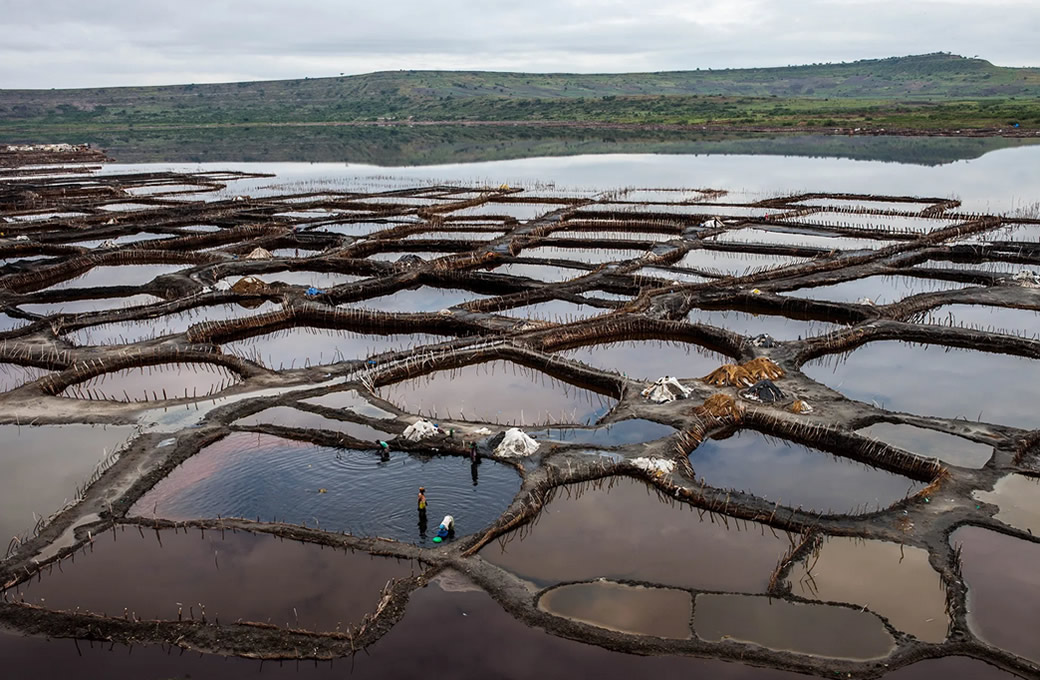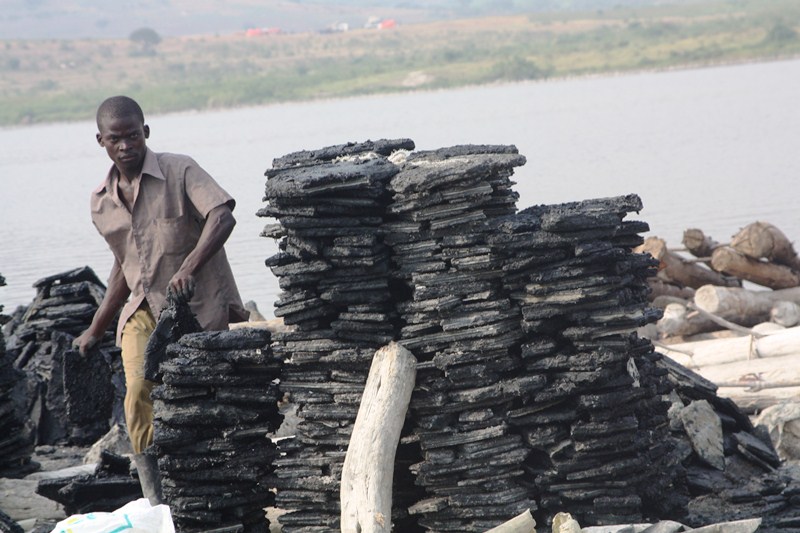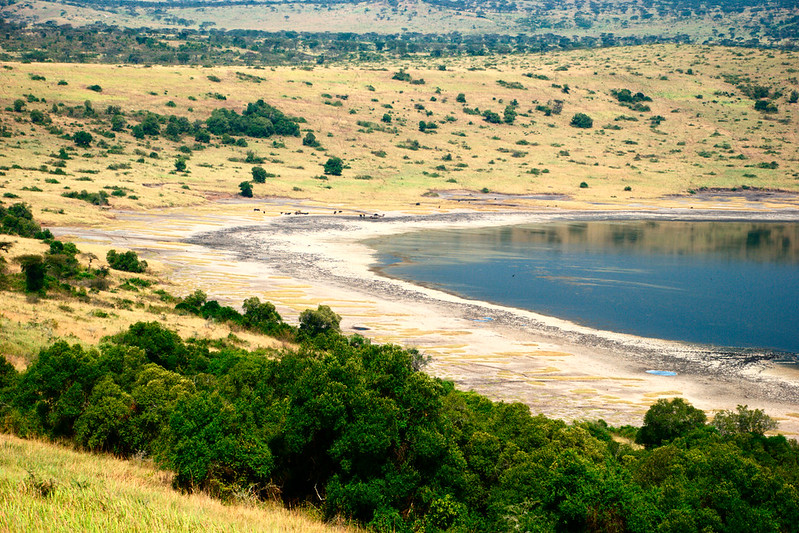Lake Katwe and salt mining in Uganda : Lake Katwe lies inside Queen Elizabeth national park at the floor of the Western Rift Valley in the South East of the Rwenzori massif and on the west side of the Kazinga channel. The lake covers an area of approximately 8 square miles. Lake Katwe is about 800 yards from Lake Edward and has a large sheet of mosquitoes that hang around its edge. This area can be brutally hot and surprisingly dry as it misses the rains that fall on the Rwenzori Mountains and in the Ankole region. There are hundreds of Euphorbia trees in the vicinity of the lake.
Lake Katwe is a customary lake on which salt mining is done, formed through long ago volcanic eruption close to 10,000 years back. The adjacent local community extracts the rock salt directly from this lake all through to the landing site and there it is dried and later sold. Taking a trip to this lake Katwe, offers an opportunity to learn about the skill of salt water, as well as a chance to directly interact with the salt miners regarding their experience in salt mining. Since the 16th century this mine has been in existence and miners are up to date using the traditional methods while harvesting the salt.

Ambutch trees are used by the miners to float on this lake as well as transport the harvested salt from the rim of the lake up to the landing site where it is sold. The water within this lake is actually 60 percent salty. The area is semi-arid whereas the soil does not support agricultural activities. for that reason, the main economic activity in this place is salt mining.
The Salt which is mined from tiny plot has been extracted for several centuries back in time. These plots are very fascinating. They actually are not like the usual plots of-land that you will come across in the rest of Uganda. they are simply ponds of about 10 X 12 feet wide as well as 3 to 5 feet deep. These are demarcated along the lake shores, and privately owned by individuals or even families and in some instances inherited. Mining within the central part of the lake is merely done by individual with licenses.
The association for Rock Salt Extraction is responsible for issuing the extraction licenses for the rock salt from the centre of this lake. This sort of arrangement was put in place to make certain that the salt in this lake is extracted in a very systematic process devoid of causing extinction. The “Plots” are found on the lake shores of this impressive lake Katwe.
There is a gradual rise of the land towards the rim of Lake Katwe revealing the vast cauldron-like hole in which Lake Katwe lies. You can actually see from the top that it lies about 95 feet below the level of Lake Edward and its waters at times look reddish from a distance which creates an interesting beauty of its own. The Katwe depression is a collection of three craters and has a relatively consistent level of shallow waters and barely ever changes, a wonder considering the fact that it is about 4 feet deep at the deepest spot. Few places in Uganda can boost higher temperatures than those found at the bottom of Lake Katwe crater in the dry season. The lake is unable to support any animal or plant life due to its unbelievably high salt concentration.
Several streams drain into the lake, but it has no outlet, so intense evaporation during the dry seasons leads to the water becoming extremely salty. The salinity of the lake is of great economic importance as its waters have massive amounts of Sodium Chloride, Sodium Carbonate and Sodium Sulphate. The lake also has small amounts of potassium Sulphate / chloride and carbonate. The salt concentration of the lake is about 13.5%.
Lake Katwe is not really a lake per say because it is not a depression in which water collects or gets filled with water by gravity but it’s a hollow filled with water by exposure of a high water table. All the streams that feed into the lake are not saline and except for one, they all dry up during the dry season.
Lake Katwe is known for its substantial salt production found in Kasese in south western part of Uganda bordered by Queen Elizabeth National Park. are a group of volcanic craters within Queen Elizabeth national park in Uganda? The volcanic field is roughly 210 square kilometres (81 square mile) in size. The individual craters vary widely in size, but the largest are up to 3 km (1.9 mile) in diameter and 100 meters (330 feet) deep. The unusual formations were formed individually by a series of violent volcanic explosions over the last 1 million years. The explosions were a result of superheated gas and steam, and despite the volcanic activity, there was no lava flow.

There are 3 main forms of salt mined at this lake:
The Edible salt (called sodium chloride), the Crude salt leaked by animals as well as the Unwashed salt. The women crumb the bottom of the salt garden to hollow out the salt. Actually they make use of their feet to smash the salt to smaller and fine crystals, after which they wash these crystals to form edible salt (also called the washed salt or sodium chloride).


